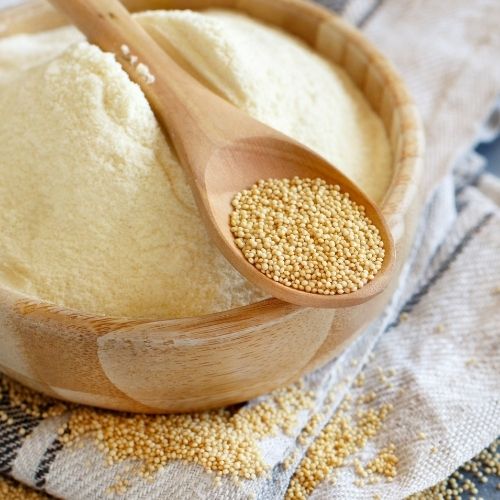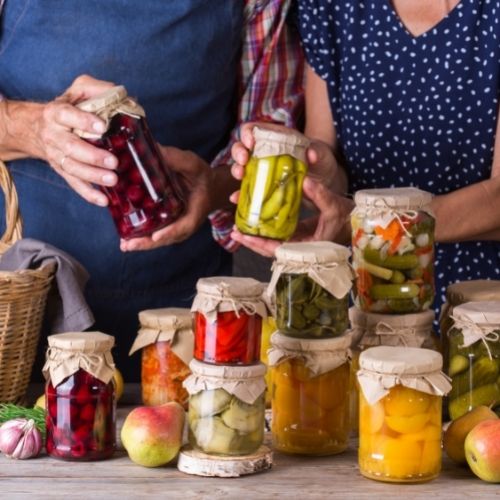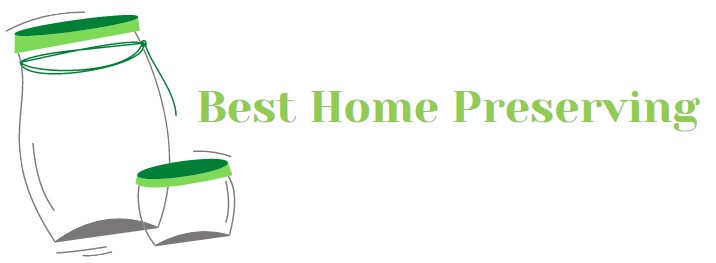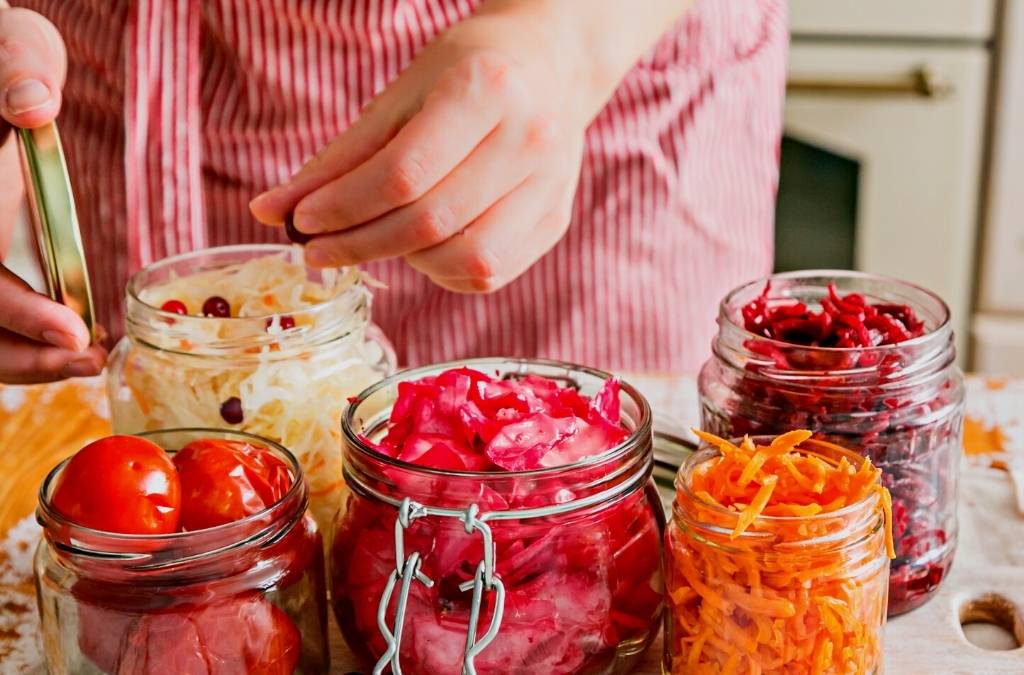Quick Content Navigation
What is Food Processing?
Different methods of food processing are used to change raw products into usable foods. They also allow food to be stored safely over different periods of time. This was traditionally very important. With no modern convenience stores, people had to find ways to save their crops and wild game for later use.
Food processing, food preserving, food production, and food fabrication are completely interrelated terms. They allude to the processes used to turn crops – and at times things reaped from the wild – into consumable foods. These processes make foods safe to consume and more appealing to human buyers.
Even though most methods of food processing are done in factories and processing plants, there are many ways for individuals to do this at home. Think of a hunter stalking deer. Once the wild animal is caught, you must properly process the venison. That means hanging, skinning, and then butchering. You may use a vacuum sealer to ensure your meat lasts longer in the freezer. This method of food processing is used by hunters and farmers all over the world.
Some methods of food processing will add various chemicals and flavor enhancers during the process. We are only looking at those that use outside agents essential to the food processing method, such as brine for pickling.
Goals of Food Processing
Food innovation is an immense space, especially now as consumers are aware of the production processes of their food. All methods of food processing have specific goals.
- Increases shelf-life of many fresh food items.
- Prevent tainting by micro-organisms.
- Food stockpiling and transportation.
- Turns crude food materials into items that are readily usable. Such as milling grain into flour.
- Provides work to a considerable population.

Three Phases of Food Processing
The level of food processing required varies greatly. This ranges from zero for most fruits, which can be picked and eaten straight from the tree. On the other hand, cashew nuts are poisonous until they are properly processed.
Methods of food processing fall neatly into three classifications.
Primary Food Processing
This method of food processing turns raw materials into something edible. Examples of this include butchering animals at an abattoir, husking grain, washing, and sorting fruits and vegetables, and pasteurizing milk. Most primary food processing methods involve cutting, cleaning, packaging, refrigeration, and storage of raw foods. This process allows safe transport to either the consumer or to a further food processing factory.
Secondary Food Processing
This is the step where raw food products are converted into either edible or more appealing forms. These methods of food processing include extraction, refining, milling, pressing, smoking, purifying, and butchering carcasses into usable pieces. It also includes home preservation methods such as drying or food dehydration, smoking food, baking, and home food canning.
Most people would see secondary food processing as a cooking method.
Tertiary Food Processing
Tertiary methods of food processing involve assembling foods from both groups above into ready-to-eat foods. Think TV dinners, frozen pizzas, bread, cakes, and pies or tinned soup. The expression “processed food” ordinarily alludes to food items produced through tertiary food processing.
A few foods require many levels of processing before arriving at their final, consumable structure. Let’s take the humble corn chip.
First, the corn is harvested on the farm and sent to the sorting and packing shed. It is then peeled, washed, and sent to a processing plant.
Here the kernels are removed and soaked in a brine solution to allow them to be processed and milled to create cornflour.
This cornflour is used with other ingredients such as flavorings and water to create a batter. This is rolled, cut to shape and then baked with other flavors to create corn chips. These are fixed into airtight packs and sent off to consumers. This shows how the tertiary methods of food processing require the first 2 methods to have done their job.
Food Preservation And Processing
All methods of food processing take potential food and make it edible. As seen in the above example with a corn chip, this can often be a complicated process. However, it could be as simple as converting raw material into something edible such as peeling a banana. Any food processing method requires some sort of change before consumption.
Baking and cooking are methods of food processing that are not usually thought of. This is also the case for many home food preserving techniques. Canning, salting, pickling, drying, and freezing all require food to be processed before it can be safely preserved. Additionally, preserving food at home can be thought of as a very specific form of food processing. These methods allow perishable foods to be safely processed for long-term storage.
Think of it this way, not all food processing is about preservation. But, all food preservation is a method of food processing!
These are common food preservation methods we use at home.

- Drying food in an oven
- Potting
- Air-drying
- Jellying
- Blanching
- Fermenting
- Preserving in salt or sugar
- Pickling
- Freezing
- Preserving food in olive oil
- Preserving food in liquor
- Canning in a water bath
Other methods of food preservation will require some specialized pieces of home preserving equipment.
Different Methods of Food Processing
The most common methods of processing food are listed below.
Drying
This is one of the oldest methods of food processing and includes air-drying, drying in an oven, or using a home food dehydrator. Each of these will remove moisture from food and stop the growth of bacteria. Drying is best for fruit and vegetables, nuts, beans, and protein.
Keep dried foods in a cool, dry place. In fact, to prolong their shelf-life, you can use a vacuum sealer to keep them airtight. If you freeze your vacuum-sealed dried foods, some will last for a few years!
Freezing
Every household in the modern world uses this method of processing food. Freezing utilizes temperatures below 0 degrees celsius to reduce bacterial activity which would cause the food to spoil. Therefore, it is perfect for fruit, vegetables, meat, and seafood.
To ensure good outcomes, it is important that the food be properly packaged before freezing. Thus, this will prevent “freezer burn” – a process caused by air inside the container which allows moisture to crystalize and cause discoloration of the frozen food. To ensure this doesn’t happen, use a home food vacuum sealer to remove all the air before popping them in the freezer.
Canning
This includes both water-bath canning and pressure canning. Similar to pasteurizing, high temperatures and pressure are utilized to kill bacteria and other micro-organisms. Using this method will require a specialized home pressure canner. However, water-bath canning can be done in a regular stockpot.
Read our article comparing pressure canning and water-bath canning.
Heating/Pasteurizing
When we hear this term the most common food we think of is milk. Indeed, this is exactly how raw milk is processed so that it is safe to transport. Milk is heated to a certain temperature before being cooled quickly to kill bacteria and other microorganisms.
This method of food processing also applies to juices, alcohol, and many fruits and vegetables preserved by home canning.
Pickling
This method of food processing has come from the ancient practices of salting and bringing. During this process, salt or salty liquid draws sugars from the cells while natural yeast and bacteria consume them. As a result, the by-product of this consumption is acids. Therefore the food sitting in these acids will preserve the food. However, it may change the taste and /or texture.
Modern pickling techniques often simply involve fresh vegetables being placed in a vinegar bath with some herbs and spices. This is then left for a time to allow the flavors to penetrate the food.
No products found.
Fermenting
One of the easiest methods of food processing, fermentation is also steeped in history and tradition. It has given us many delicious “live-culture foods” such as yogurt, kimchi, sauerkraut, and sourdough bread. Moreover, it is vital for any alcoholic beverage including beer and wine.
Further, fermenting encourages the growth of bacteria and yeast to break down starch and sugars in the food. So, lactic acid is created and this acts as a preserving agent. It also changes low acid foods into high acid foods.
Smoking
Food smoking is used for cooking and food preserving, however, it is mostly used to enhance the flavor of meats and cheeses.
This food processing method works in 2 ways. Firstly, through low heat, which ensures the food, usually, meat is cooked through. Doing this reduces the moisture content and allows food to be stored longer. The second method is the smoke itself, which contains compounds that prevent fats within the meat from going rancid.
One of the most popular methods of food processing, it is used for many of the products we use daily. Salami, bacon and ham, smoked salmon, cheese, and many spices all owe their unique flavor to the smoking process.
Salting/Curing
Another traditional food processing method, meat, and fish were covered with salt and left to dry. The salt draws moisture out of the food and allows for longer shelf life.
Salted fish is very popular in Scandinavian and European countries for herring, anchovies, and sardines.
Jellying
This process includes jams and jellies and is used mainly for fruits. Fresh produce is peeled and sliced then boiled with some water and lots of sugar. Often gelatine is added to allow the liquid to “set”.
While still hot, this is then poured into sterilized jars, a lid is added and it is left to cool. When stored in a cool, dark place this easy method of food processing can last for many months.
Food Processing Versus Food Production
There are various types of food production methods commonly used today. Like food preservation and food processing, we use most of these methods in our kitchens at home. Please note, some will require specialized equipment.
Food production and processing aren’t the same things. However, there are similarities and at times, one method can work for the other process. For the most part, “food processing” alludes to the techniques used to change crude materials into food items that we can instantly eat or prepare. In contrast, “food production” indicates the particular processes used to prepare the food to eat.
Put another way, cooking is a general term for food production. Explicit methods of food production include:
- Boiling
- Emulsification
- Steaming
- Frying
- Grilling
- Mixing
- Slicing and cutting
- Grinding
- Marinating
Advantages of Food Processing
The significant advantages of various methods of food processing include:
- Converts some foods into an edible state.
- Reduces harmful microorganisms and bacteria in food that could cause illness.
- Extend the shelf-life of many food items.
- It may increase the nutritional value of some foods.
- Processing and packaging allow for convenience.
- Often processed foods are cheaper than their fresh counterparts – think frozen vegetables.
- Can enhance the flavor of some foods.
Downsides of Food Processing
The significant downsides of different methods of food processing include:
- Often there is a loss of fiber plus some vitamins and minerals.
- Chemicals are often added, including preservatives and flavor enhancers.
- Some processed foods can be high in sugars and salt.
- Can be expensive as the cost of processing has to be passed on to the consumer.
Conventional Processed Foods versus Current Methods of Food Processing
When we talk of methods of food processing, most people think of modern outcomes that produce food high in fats, sugars, or salts. This article should have shown you that this does not have to be the case.
Food processing is rooted in ancient times to allow foods that would spoil quickly to be kept for longer periods. This ensured that people had enough to eat when times were hard. In fact, we have shown that some foods must be processed to make them edible for humans. These included cashews which are poisonous until processed, plus most grains.
Hopefully, this article gives you a clearer insight into the different methods of food processing.
For more information, read our other blog posts on different food preserving techniques, using the right home preserving equipment to save money, or making jerky in a home food dehydrator.










 Hi! I’m Sally-Anne!
Hi! I’m Sally-Anne!